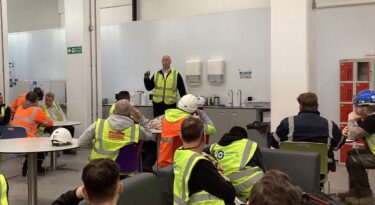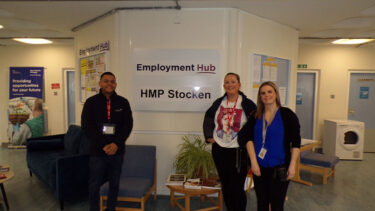The impact of the recent pandemic across society has been many and varied.
How we live, travel, work and relax are all being reconsidered as we navigate this global threat to our health and wellbeing.
There has been a lot of creative and innovative thinking about what the future might look like but the pandemic has also been a period of acceleration, where emerging trends have been supercharged through necessity.
The most obvious of these has been the use of technology, particularly how we communicate for instance. Video conferencing technology has been around in one form or another for many years but how many of us prior to March would choose the VC option over a physical meeting? The honest answer is not that many of us.
However, the Rubicon has now been crossed in terms of virtual communications and we must also hope that this renewed focus on the incredible opportunities offered by digital will be embraced more widely, not least within the construction industry.
The construction industry has been on its own digital journey for some time now and significant progress has been made but if it is going to achieve some of its key aspirations in the years ahead around quality, efficiency and sustainability then much more needs to be done.
One of the most important conversations currently taking place within the industry is around offsite and its contribution to a more sustainable approach to construction.
While there are many facets to consider when examining the potential for offsite, what is clear is that continued digital innovation will be key to its success.
To really reap the benefits of offsite then we must aspire to a digital end-to-end process where the data, information and geometry that is established at the beginning of the design process remains available and relevant through the delivery and the life of the asset.
Today, that remains a long way from the case.
At the moment, key information moves along the development process and is often reconfigured or regurgitated and regularly there are complete breaks in the digital information chain.
When we look at offsite manufacturing, the data from the original modelling is often not usable so that information is then reproduced in a different format, creating significant inefficiencies all along the process.
This conundrum of interoperability is one that is slowly being addressed by the software developers but until data produced in one format can be reproduced and read without losing any of its fidelity, the dream of a seamless end-to-end approach will remain just that.
Through embracing a digital across the entire lifecycle of a project we can also begin to develop more digital twins for our built projects, something that will be hugely important in meeting future carbon reduction targets for the whole life of a building.
In its purest form, a digital twin is a complete digital replica of a physical model and means that you can control all aspects of a built asset via a laptop or phone. You can control functions such as heating, environmental controls, lighting and security but more importantly, it means you can control and measure outputs, providing a far greater understanding of operational carbon and energy.
Creating a digital twin of an asset is a significant undertaking, of that there is no doubt. It is a process that has to be embraced at the design stage of a project and viewing it in purely commercial terms, it is seen at best as a nice to have rather than business critical by those funding projects.
However, that may not remain the case for too long.
The Government has just published its Construction Playbook and before too long we will begin to get a better understanding of its approach to next year’s COP26 and how that will impact the construction industry in terms of facing up to the challenges of the climate crisis.
How mandated the Government’s approach to carbon reduction will be is anybody’s guess at this stage but what is clear is that we need to have the right unified mindset and commitment to the opportunities of digital right across the industry if we are going to make the necessary progress in this area.
We must connect the dots so that architects, main contractors and developers are not operating within their own silos but working with the whole life of the project in mind and underpinned by a robust digital framework.
The pandemic has provided us with a clear reminder that the digital tools exist to improve our lives in so many ways and it is a lesson that needs to be quickly embraced by the construction industry, for its own sake and for the sake of our planet.




